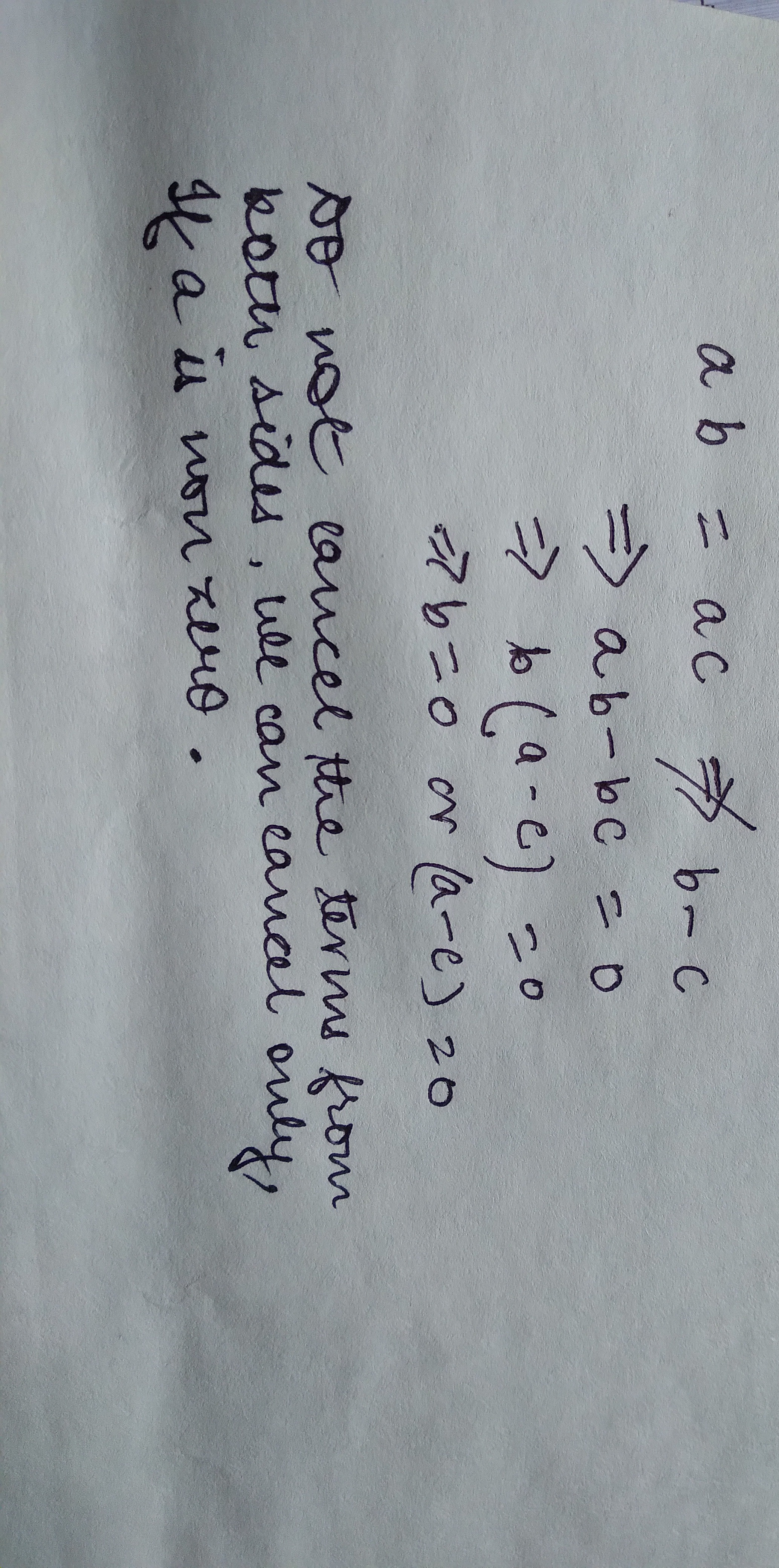Question
Question: $ab = ac \nRightarrow b-c$ $\Rightarrow ab-bc = 0$ $\Rightarrow b(a-c)=0$ $\Rightarrow b=0$ or $(a-...
ab=ac⇏b−c ⇒ab−bc=0 ⇒b(a−c)=0 ⇒b=0 or (a−c)≥0 Do not cancel the terms from both sides, we can cancel only, If a is non zero.

If ab=ac, then b=c unless a=0. In this case, b and c can be any value.
The statement implies that if a is non-zero, then b must equal c.
The reasoning provided (ab−bc=0⇒b(a−c)=0⇒b=0 or (a−c)≥0) is correct.
If ab=ac, it implies b=c because we can always cancel a from both sides.
If ab=ac, then b=c unless a=0. In this case, b and c can be any value.
Solution
The initial equation is ab=ac. To understand the relationship between b and c, we can rearrange the equation: ab−ac=0 Factor out the common term a: a(b−c)=0 For the product of two terms to be zero, at least one of the terms must be zero. Therefore, we have two possibilities:
- a=0
- b−c=0⇒b=c
The note "Do not cancel the terms from both sides, we can cancel only, If a is non zero" is crucial. If a=0, we can divide both sides of a(b−c)=0 by a, which results in b−c=0, thus b=c. However, if a=0, the equation becomes 0⋅(b−c)=0, which simplifies to 0=0. This equation is true for any values of b and c. Therefore, if a=0, b is not necessarily equal to c.
The provided reasoning "ab−bc=0⇒b(a−c)=0⇒b=0 or (a−c)≥0" contains errors:
- The step "ab−bc=0" is incorrect if the starting point is ab=ac. It should be ab−ac=0.
- The step "b(a−c)=0" would follow from ab−bc=0, but not from ab=ac.
- The conclusion "b=0 or (a−c)≥0" is incorrect. From b(a−c)=0, the correct conclusion is b=0 or a−c=0. The condition (a−c)≥0 is not implied.
Thus, the statement ab=ac implies b=c only if a is non-zero. If a=0, b and c can be any values.
